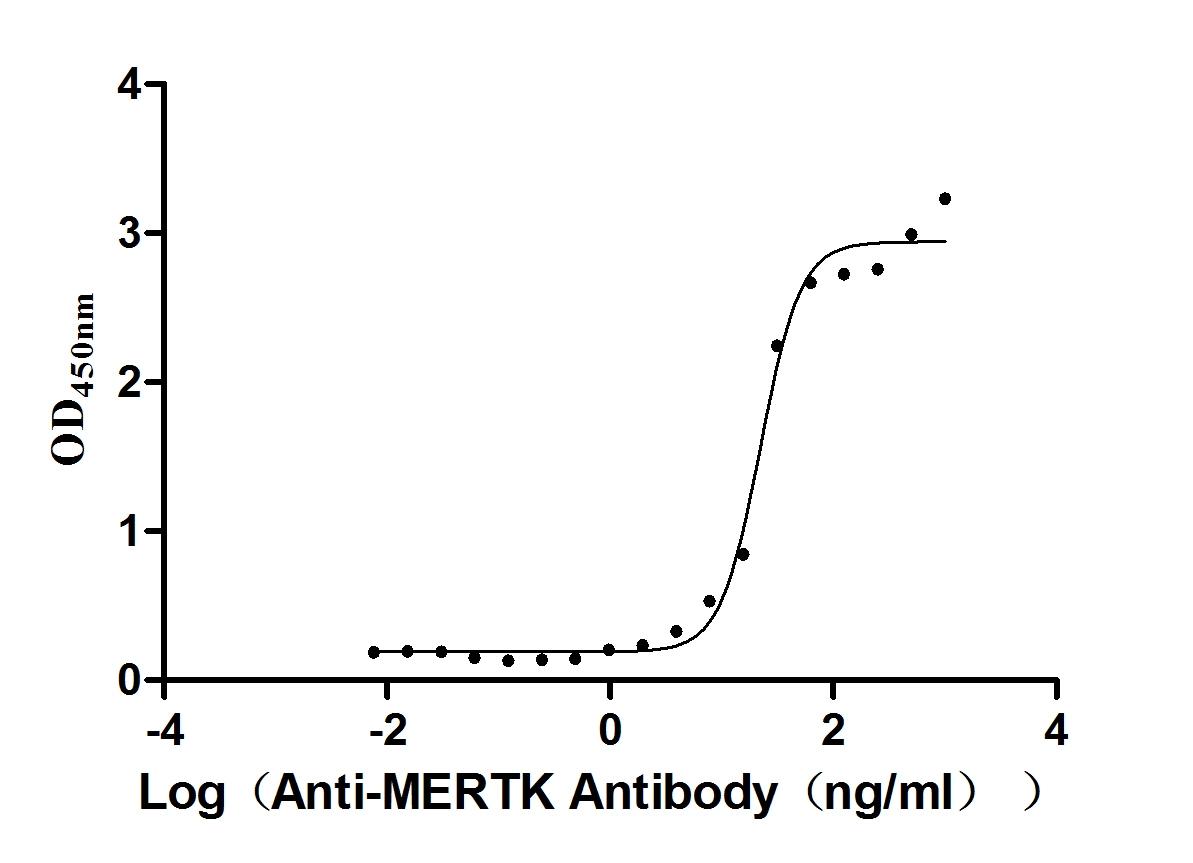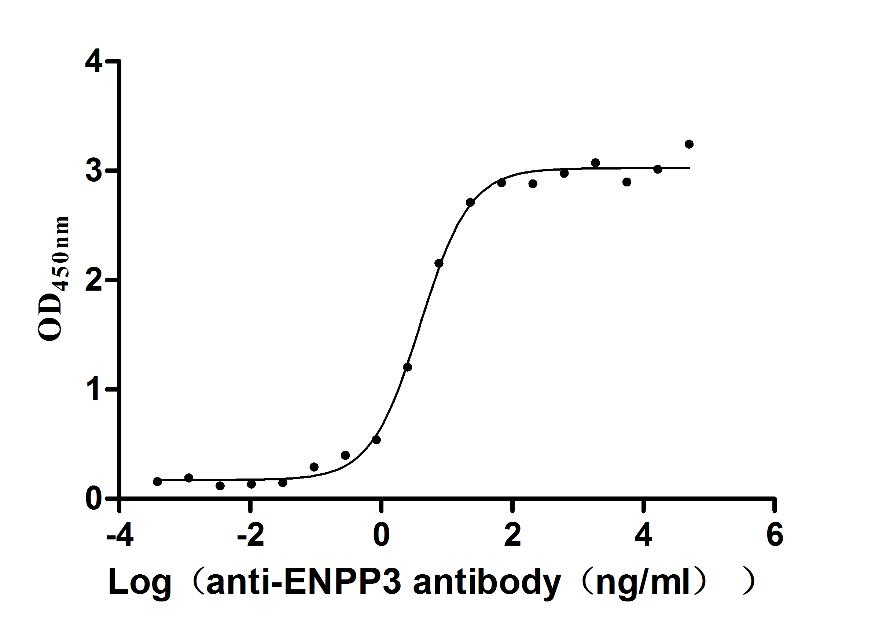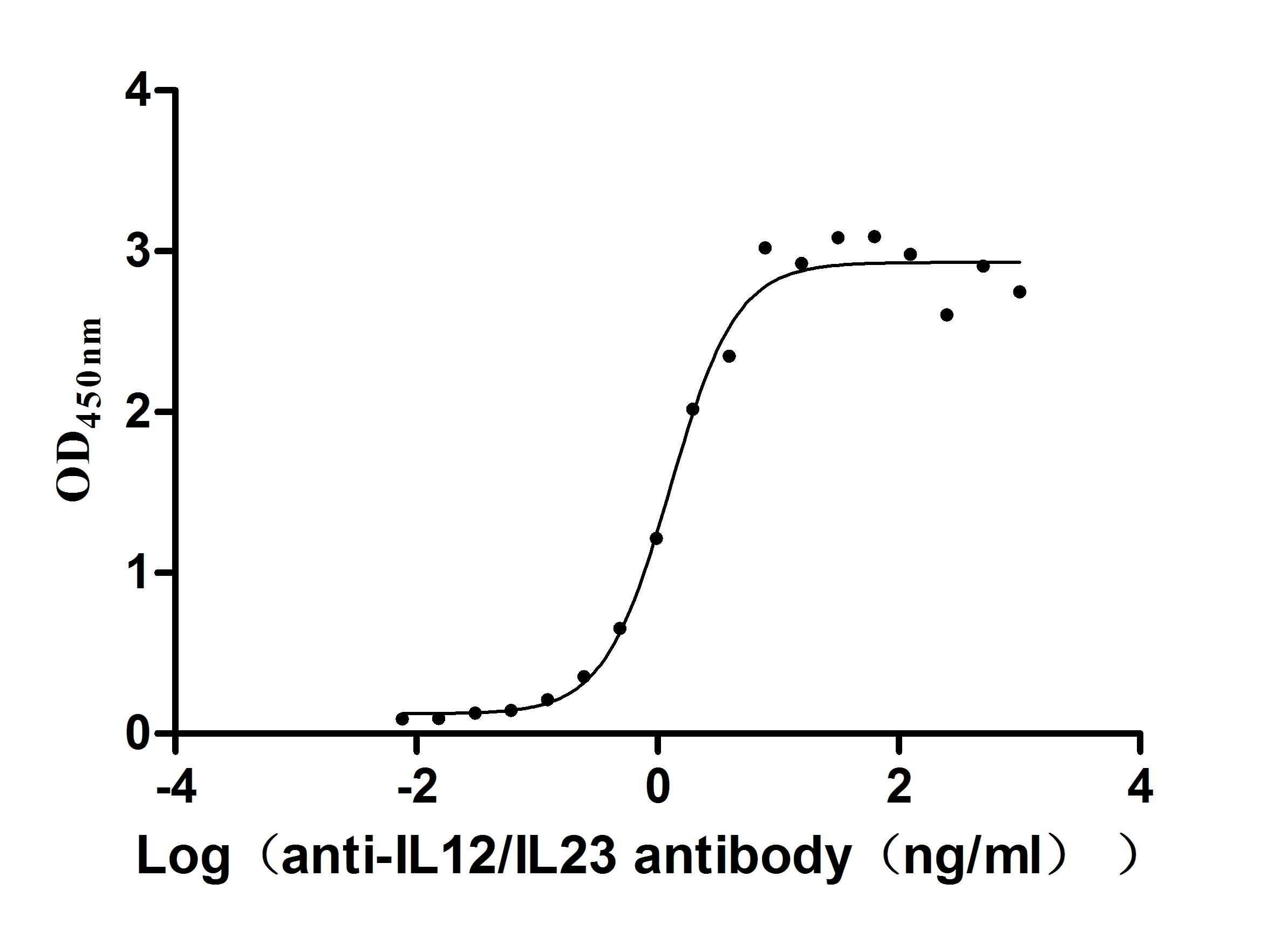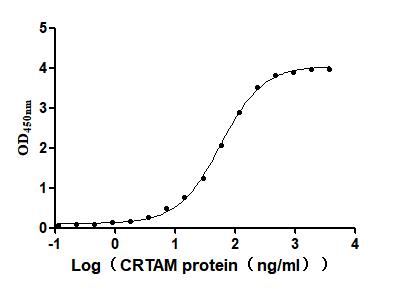Recombinant Human E3 ubiquitin-protein ligase CBL-B (CBLB), partial
-
中文名稱:Recombinant Human E3 ubiquitin-protein ligase CBL-B(CBLB) ,partial,Yeast
-
貨號:CSB-YP623789HU
-
規(guī)格:
-
來源:Yeast
-
其他:
-
中文名稱:Recombinant Human E3 ubiquitin-protein ligase CBL-B(CBLB) ,partial,Yeast
-
貨號:CSB-EP623789HU
-
規(guī)格:
-
來源:E.coli
-
其他:
-
中文名稱:Recombinant Human E3 ubiquitin-protein ligase CBL-B(CBLB) ,partial,Yeast
-
貨號:CSB-EP623789HU-B
-
規(guī)格:
-
來源:E.coli
-
共軛:Avi-tag Biotinylated
E. coli biotin ligase (BirA) is highly specific in covalently attaching biotin to the 15 amino acid AviTag peptide. This recombinant protein was biotinylated in vivo by AviTag-BirA technology, which method is BriA catalyzes amide linkage between the biotin and the specific lysine of the AviTag.
-
其他:
-
中文名稱:Recombinant Human E3 ubiquitin-protein ligase CBL-B(CBLB) ,partial,Yeast
-
貨號:CSB-BP623789HU
-
規(guī)格:
-
來源:Baculovirus
-
其他:
-
中文名稱:Recombinant Human E3 ubiquitin-protein ligase CBL-B(CBLB) ,partial,Yeast
-
貨號:CSB-MP623789HU
-
規(guī)格:
-
來源:Mammalian cell
-
其他:
產品詳情
-
純度:>85% (SDS-PAGE)
-
基因名:
-
Uniprot No.:
-
別名:CBLB; RNF56; Nbla00127; E3 ubiquitin-protein ligase CBL-B; EC 2.3.2.27; Casitas B-lineage lymphoma proto-oncogene b; RING finger protein 56; RING-type E3 ubiquitin transferase CBL-B; SH3-binding protein CBL-B; Signal transduction protein CBL-B
-
種屬:Homo sapiens (Human)
-
蛋白長度:Partial
-
蛋白標簽:Tag?type?will?be?determined?during?the?manufacturing?process.
The tag type will be determined during production process. If you have specified tag type, please tell us and we will develop the specified tag preferentially. -
產品提供形式:Lyophilized powder
Note: We will preferentially ship the format that we have in stock, however, if you have any special requirement for the format, please remark your requirement when placing the order, we will prepare according to your demand. -
復溶:We recommend that this vial be briefly centrifuged prior to opening to bring the contents to the bottom. Please reconstitute protein in deionized sterile water to a concentration of 0.1-1.0 mg/mL.We recommend to add 5-50% of glycerol (final concentration) and aliquot for long-term storage at -20℃/-80℃. Our default final concentration of glycerol is 50%. Customers could use it as reference.
-
儲存條件:Store at -20°C/-80°C upon receipt, aliquoting is necessary for mutiple use. Avoid repeated freeze-thaw cycles.
-
保質期:The shelf life is related to many factors, storage state, buffer ingredients, storage temperature and the stability of the protein itself.
Generally, the shelf life of liquid form is 6 months at -20°C/-80°C. The shelf life of lyophilized form is 12 months at -20°C/-80°C. -
貨期:Delivery time may differ from different purchasing way or location, please kindly consult your local distributors for specific delivery time.Note: All of our proteins are default shipped with normal blue ice packs, if you request to ship with dry ice, please communicate with us in advance and extra fees will be charged.
-
注意事項:Repeated freezing and thawing is not recommended. Store working aliquots at 4°C for up to one week.
-
Datasheet :Please contact us to get it.
相關產品
靶點詳情
-
功能:E3 ubiquitin-protein ligase which accepts ubiquitin from specific E2 ubiquitin-conjugating enzymes, and transfers it to substrates, generally promoting their degradation by the proteasome. Negatively regulates TCR (T-cell receptor), BCR (B-cell receptor) and FCER1 (high affinity immunoglobulin epsilon receptor) signal transduction pathways. In naive T-cells, inhibits VAV1 activation upon TCR engagement and imposes a requirement for CD28 costimulation for proliferation and IL-2 production. Also acts by promoting PIK3R1/p85 ubiquitination, which impairs its recruitment to the TCR and subsequent activation. In activated T-cells, inhibits PLCG1 activation and calcium mobilization upon restimulation and promotes anergy. In B-cells, acts by ubiquitinating SYK and promoting its proteasomal degradation. Slightly promotes SRC ubiquitination. May be involved in EGFR ubiquitination and internalization. May be functionally coupled with the E2 ubiquitin-protein ligase UB2D3. In association with CBL, required for proper feedback inhibition of ciliary platelet-derived growth factor receptor-alpha (PDGFRA) signaling pathway via ubiquitination and internalization of PDGFRA.
-
基因功能參考文獻:
- This study aimed to investigate the difference between the expression of Cbl-b in lung squamous cell carcinoma and adenocarcinoma. PMID: 29384143
- miR-891b regulated the Smad3/ p21 axis by directly targeting the Cbl-b gene to inhibit the proliferative ability of pancreatic adenocarcinoma cells. PMID: 27494897
- our findings suggest that E3 ubiquitin ligase Cbl-b modulates the interplay between effector and Tregs, particularly resistance to the suppression phenotype by regulating the K63 polyubiquitination profile in lupus Tregs. PMID: 28940360
- These results suggest that Cbl-b is an important factor for maintenance of the epithelial phenotype and inhibition of cell migration in MDR gastric and breast cancer cells. PMID: 28334634
- Silencing CBLB in human monocyte-derived macrophages resulted in increased cytokine production and impaired down-modulation of dectin-1 and dectin-2 expression after C.albicans exposure. PMID: 27428899
- this study shows that rs2305035 genotypes in CBLB are associated with clinical and radiation pneumonitis risk among patients with non-small-cell lung cancer treated with definitive radiotherapy PMID: 26732495
- Results suggest that Cbl-b improves the prognosis of RANK-expressing breast cancer patients by inhibiting RANKL-induced breast cancer cell migration and metastasis. PMID: 26087197
- direct interaction between Cblin and the TKB domain of Cbl-b PMID: 26874193
- findings suggest that Cbl-b limits NGF-TrkA signaling to control the length of neurites. PMID: 25921289
- Translocation of Cbl-b from the nucleus to the cytoplasm prevented the localization of P-gp to caveolae resulting in the reversal of multidrug resistance through the ubiquitination and degradation of c-Src. PMID: 25788263
- Our results suggest that celecoxib-mediated upregulation of Cbl-b is responsible, at least in part, for the additive antitumor effect of celecoxib and rapamycin via inhibition of rapamycin-induced Akt activation. PMID: 25701378
- results show that Cbl-b suppresses human ORMDL3 expression through STAT6 PMID: 26112603
- Low CBLB expression is associated with glioma cell invasion. PMID: 25691332
- The data suggest a role of the CBLB rs12487066 variant in the interactions of a genetic risk factor and IFN function during viral infections in multiple sclerosis. PMID: 25261476
- Ubiquitin ligase Cbl-b represses IGF-I-induced epithelial mesenchymal transition via ZEB2 and microRNA-200c regulation in gastric cancer cells. PMID: 24885194
- Cbl-b knockdown caused significant increase of phosphorylation of EGFR, ERK and Akt, decrease of mitochondrial membrane potential, and increase of expression ratio of Bcl-2/Bax. PMID: 24351824
- that icotinib-induced upregulation of Cbl-b is responsible, at least in part, for the antitumor effect of icotinib via the inhibition of phosphoinositide 3-kinase (PI3K)/Akt and mitogen-activated protein kinase pathways in EGFR-mutated NSCLC cells. PMID: 23586056
- abnormal peripheral tolerance in SLE is caused by a deficiency in Cbl-b, and that this ubiquitin ligase plays a key role in regulating T-cell receptor signaling during the induction of peripheral tolerance. PMID: 23280105
- FOXP3 mRNA expression correlated with CBLB and ITCH in MS patients. PMID: 23039885
- Pooled analysis corroborated the effect on multiple sclerosis predisposition of three genes: TMEM39A, IL12B, and CBLB PMID: 22194214
- Data show that bufalin-induced down-regulation of Cbl-b contributed to the up-regulation of TRAIL Receptors DR4 and DR5. PMID: 22447040
- Autoinhibition and phosphorylation-induced activation mechanisms of human cancer and autoimmune disease-related E3 protein Cbl-b PMID: 22158902
- Over expression of TGF-beta and CTLA-4 leads to T cell hyporesponsiveness, a major hallmark of leprosy, by increasing the expression of Cbl-b. PMID: 21807564
- data suggest that Cbl-b may contribute to the deregulated activation of T lymphocytes observed in systemic lupus erythematosus (SLE); a significant association between the 2126(A/G) SNP and SLE was detected PMID: 21558139
- CBLB mutation is asssociated with chronic myelogenous leukemia. PMID: 21346257
- Deregulations of Lck-ZAP-70-Cbl-b cross-talk and miR181a in T cells were found to be associated with cholesterol-dependent-dismantling of HLA-DR rafts in macrophages in leprosy progression. PMID: 21453975
- These data provide further evidence of the association of MS disease with variation within CBLB. PMID: 21037273
- Interplay between transgenic Cblb-dependent T cell anergy and other mechanisms prevents organ-specific islet-cell autoimmunity. PMID: 21248249
- Cbl-b plays a positive modulatory role in GPVI-dependent platelet signaling, which translates to an important regulatory role in hemostasis and thrombosis in vivo PMID: 20400514
- Cbl-b and itch are key regulators of peripheral T-cell tolerance [review] PMID: 20395198
- Cbl-b plays a negative role in Crk-L-C3G-mediated Rap1 and LFA-1 activation in T cells. PMID: 12697763
- Expression of Cbl-b effectively blocks the ability of Cool-2 to stimulate PAK, providing an additional mechanism, aside from catalyzing receptor ubiquitination, by which Cbl-b acts as a negative regulator for signaling activities requiring PAK activation. PMID: 12935897
- Cbl-b is a negative regulator of both Lyn-Syk-LAT and Gab2mediated complementary signaling pathways in FcepsilonRI-mediated mast cell activation PMID: 14604964
- genetic interaction between the CTLA4 and CBLB genes in type 1 diabetes PMID: 15629882
- NF-kappaB activity is enhanced by a PI3K signal mediated by Cbl-b and Rho PMID: 15922296
- results suggest that Cbl-b- or atrogin-1-mediated ubiquitination plays an important role in unloading-induced muscle atrophy, and that unloading stress may preferentially inhibit transcriptional responses in skeletal muscle PMID: 16868939
- In a primary analysis, no evidence for an association of the CBLB SNP rs3772534 with disease was found in either sample set in type 1 diabetes. PMID: 17209142
- the host ubiquitin ligase Cbl-b interacts with the type III-secreted effector exotoxin T (ExoT) and plays a key role in vivo in limiting bacterial dissemination mediated by ExoT PMID: 17235393
- F328L mutation is involved in the development of autoimmune diseases including type 1 diabetes, and also provide insight into the structure-function relationship of CBLB protein PMID: 18201552
- Cbls suppress cell death in healthy neurons at least in part by inhibiting the ability of mixed lineage kinases to activate JNK signaling. PMID: 19546888
顯示更多
收起更多
-
亞細胞定位:Cytoplasm. Note=Upon EGF stimulation, associates with endocytic vesicles.
-
組織特異性:Expressed in placenta, heart, lung, kidney, spleen, ovary and testis, as well as fetal brain and liver and hematopoietic cell lines, but not in adult brain, liver, pancreas, salivary gland, or skeletal muscle. Present in lymphocytes (at protein level).
-
數(shù)據(jù)庫鏈接:
Most popular with customers
-
Recombinant Mouse Tyrosine-protein kinase Mer (Mertk), partial (Active)
Express system: Mammalian cell
Species: Mus musculus (Mouse)
-
Express system: Mammalian cell
Species: Macaca fascicularis (Crab-eating macaque) (Cynomolgus monkey)
-
Recombinant Human IL12B&IL12A Heterodimer Protein (Active)
Express system: Mammalian cell
Species: Homo sapiens (Human)
-
Recombinant Human Lymphocyte antigen 6 complex locus protein G6d (LY6G6D) (Active)
Express system: Yeast
Species: Homo sapiens (Human)
-
Recombinant Mouse Cytotoxic and regulatory T-cell molecule (Crtam), partial (Active)
Express system: Mammalian cell
Species: Mus musculus (Mouse)
-
Recombinant Human Cadherin-1(CDH1),partial (Active)
Express system: Mammalian cell
Species: Homo sapiens (Human)
-
Recombinant DT3C (Diphtheria toxin & spg 3C domain) for Antibody Internalization Assay (Active)
Express system: E.coli
Species: N/A



















